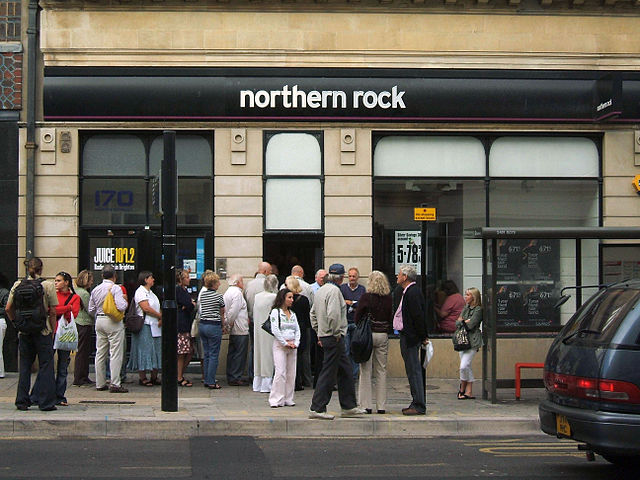2007–2008 financial crisis
The 2007–2008 financial crisis, or the global financial crisis (GFC), was the most severe worldwide economic crisis since the Great Depression. Predatory lending in the form of subprime mortgages targeting low-income homebuyers, excessive risk-taking by global financial institutions, a continuous buildup of toxic assets within banks, and the bursting of the United States housing bubble culminated in a "perfect storm", which led to the Great Recession.
A continuous buildup of toxic assets in the form of subprime mortgages purchased by Lehman Brothers ultimately led to the firm's bankruptcy in September 2008. The collapse of Lehman Brothers is often cited as both the culmination of the subprime mortgage crisis, and the catalyst for the Great Recession in the United States.
Share in GDP of U.S. financial sector since 1860
People queuing outside a Northern Rock branch in the United Kingdom to withdraw their savings during the financial crisis
The American Recovery and Reinvestment Act of 2009 provided a payroll tax credit repealed in late 2010.
A financial crisis is any of a broad variety of situations in which some financial assets suddenly lose a large part of their nominal value. In the 19th and early 20th centuries, many financial crises were associated with banking panics, and many recessions coincided with these panics. Other situations that are often called financial crises include stock market crashes and the bursting of other financial bubbles, currency crises, and sovereign defaults. Financial crises directly result in a loss of paper wealth but do not necessarily result in significant changes in the real economy.
Black Friday, 9 May 1873, Vienna Stock Exchange. The Panic of 1873 and Long Depression followed.
Declining consumer spending
The Roman denarius was debased over time.
Philip II of Spain defaulted four times on Spain's debt.








